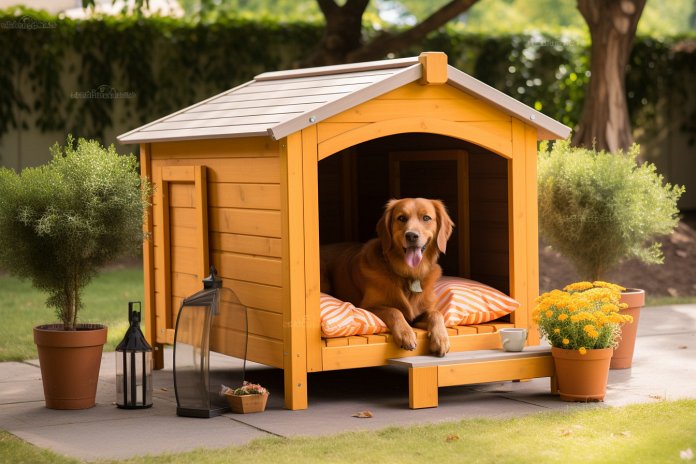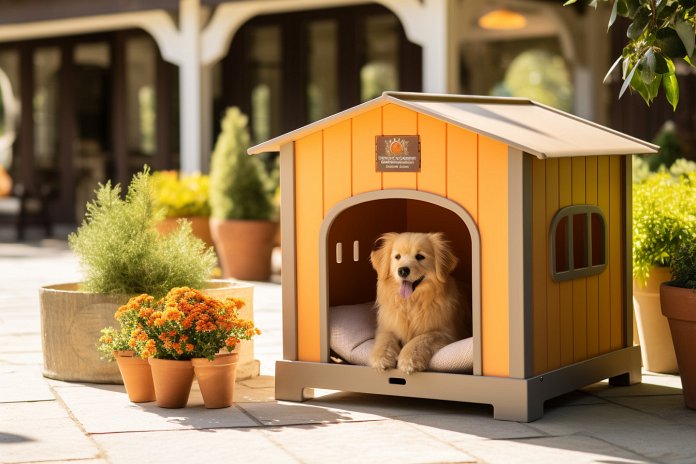
Dogs used to be purely outdoor animals, but now they are important members of the family and deeply involved in everything that goes on around the home. While dogs can live in outdoor kennels, we need to consider whether they should. There are signs that indicate whether a dog wants to be inside with you, such as scratching at the door or looking in the windows. Dogs that are unhappy outside may exhibit destructive behavior or physical signs of discomfort.
Body Language
Keep an eye out for signs that your dog can’t handle life in a kennel and wants to be indoors, such as barking, whining, panting, scratching, pacing, and whimpering.
The History of Dogs Living in Kennels
In the past, dogs were seen as outdoor animals and spent their lives in yards. However, in recent decades, our understanding of dogs has changed, and we now recognize their social nature and need for human interaction. Dogs have moved from yards to homes.
The Science of Dogs Living in Kennels
Experts agree that dogs do better when they live inside. Dogs need human interaction, mental stimulation, and quality time with their owners. When dogs are left outside, they can become bored and destructive. If you can’t meet your dog’s needs, getting a dog may not be the right choice for you.
Training a Dog to Live Inside
If you’re worried about bringing a dog inside, there are simple tips to make the transition easier. Choose a dog that suits your home and set boundaries. Start slowly and confine your dog to a smaller safe-zone while training them. Toilet train your dog and provide plenty of exercise and fresh air outside.
“From outdoor kennels to indoor homes: the evolution of our dogs’ place in the family”

Tips & Things to Know
1️⃣ Pay attention to your dog’s behavior and body language to determine if they prefer to be inside with you. Signs such as scratching at the door, looking in the windows, or destructive behavior could indicate their desire to be indoors.
2️⃣ Dogs thrive on human interaction and mental stimulation, so it’s best for their wellbeing to live inside with their family. Leaving dogs outside for prolonged periods can lead to boredom and destructive behavior.
3️⃣ When transitioning a dog from living in a kennel to living indoors, choose a breed that suits your home and set clear boundaries. Start slowly by confining them to a safe-zone and gradually train them on how to behave inside. Don’t forget to give them regular exercise and fresh air outside.
Frequently Asked Questions, Answered ✅
1. Should dogs live in outdoor kennels or indoors with their owners?
– Dogs do better inside as they need human interaction and mental stimulation.
2. How can you tell if your dog wants to be inside with you?
– Signs include scratching at the door, looking in the windows, whining when you shut them outside, destructive behavior, and attention-seeking behavior.
3. What are the physical signs that living outside is a health risk for a dog?
– A dog left outside in freezing temperatures may shiver, become lethargic, and be at risk of developing hypothermia. A dog left outside in searing heat may show signs of heat stroke, such as panting, excessive drooling, and a high body temperature.
4. What is the history of dogs living in kennels?
– Dogs were seen as outdoor animals in the past, but in recent decades, they have moved into our homes due to our understanding of their social and emotional needs.
5. How can you train a dog to live inside?
– Choose a dog that suits your home, establish clear boundaries, start slowly by confining them to a safe-zone, toilet train them, and provide plenty of outdoor exercise and fresh air.